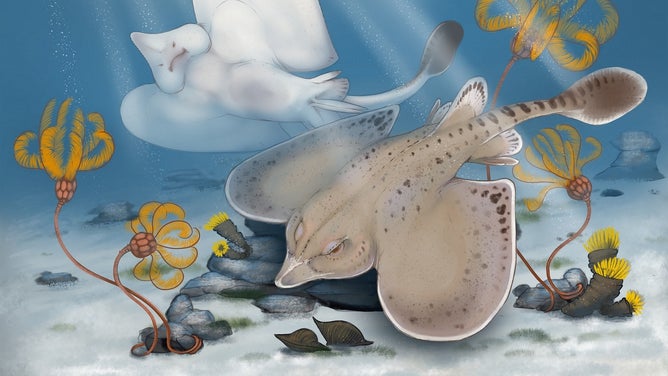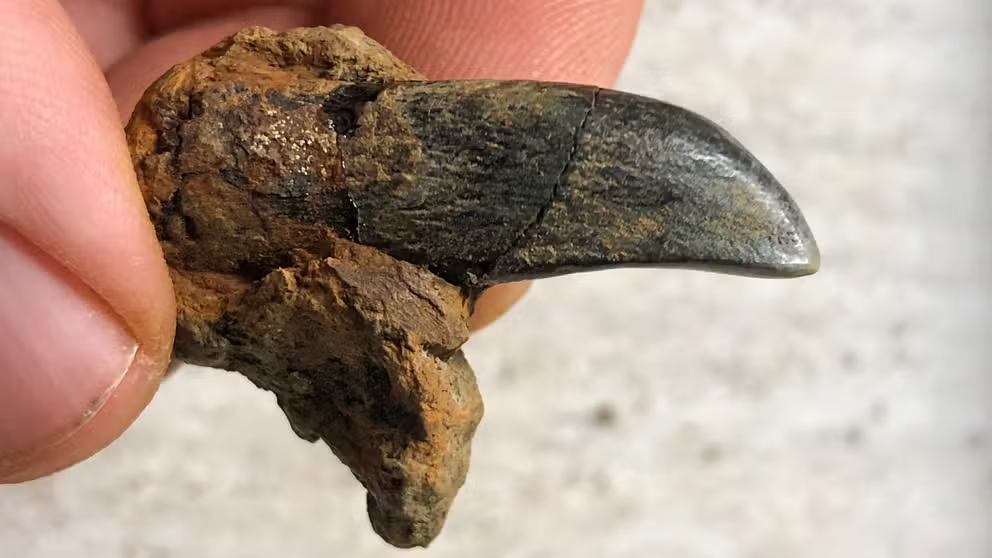New species of ancient shark identified at national park in Kentucky
Named Strigilodus tollesonae, the extinct shark species is more closely related to modern ratfish than to modern sharks and rays, according to the NPS.
FILE: How kids at Dinosaur Park are finding bones with help from the rain
Located in Laurel, Maryland, Dinosaur Park is an outdoor laboratory where paleontologists, park visitors, and the weather combine forces to discover hundreds of fossils.
Mammoth Cave National Park officials announced Wednesday that a new species of ancient shark was identified through fossils found in the Kentucky park.
Named Strigilodus tollesonae, the extinct shark species is more closely related to modern ratfish than to modern sharks and rays, according to the NPS. They may have lived like a modern skate and consumed snails, bivalves, soft-bodied worms and smaller fish.
The shark was discovered through spoon-like teeth that were found in a cave wall and ceiling, the NPS said. The teeth uncovered at Mammoth Cave represent all known tooth positions in the mouth of both adults and juveniles of the new species.

A new illustration of Strigilodus tollesonae created specially by artist Benji Paysnoe.
(Benji Paysnoe / NPS / FOX Weather)
These teeth helped inform the naming of the ancient shark, as "Strigilodus tollesonae" translates to "Tolleson’s Scraper Tooth." The NPS noted that "Tolleson" comes from Mammoth Cave National Park guide Kelli Tolleson, who provided field support for the ongoing paleontological resources inventory at the park.
CHARTER BOAT CAPTAIN FINDS RARE 6-INCH MEGALODON SHARK TOOTH OFF FLORIDA COAST
Coordinated by Mammoth Cave and the NPS Paleontology Program, the PRI was founded in Nov. 2019 when shark fossil specialist John-Paul Hodnett started working with the NPS to identify shark fossils found in Mammoth Cave. According to the NPS, at least 70 species of ancient fish have been identified at the Kentucky park, with more than 25 caves and cave passages surveyed.

The Giant's Coffin, one of the notable landmarks within the Mammoth Cave system.
(Thomas DiGiovannangelo / NPS Photo / FOX Weather)
Mammoth Cave is the longest cave system in the world. The NPS said the cave passages were cut out from limestones and sandstones that were deposited up to 350 million years ago, when the supercontinent Pangea was almost completely formed.
